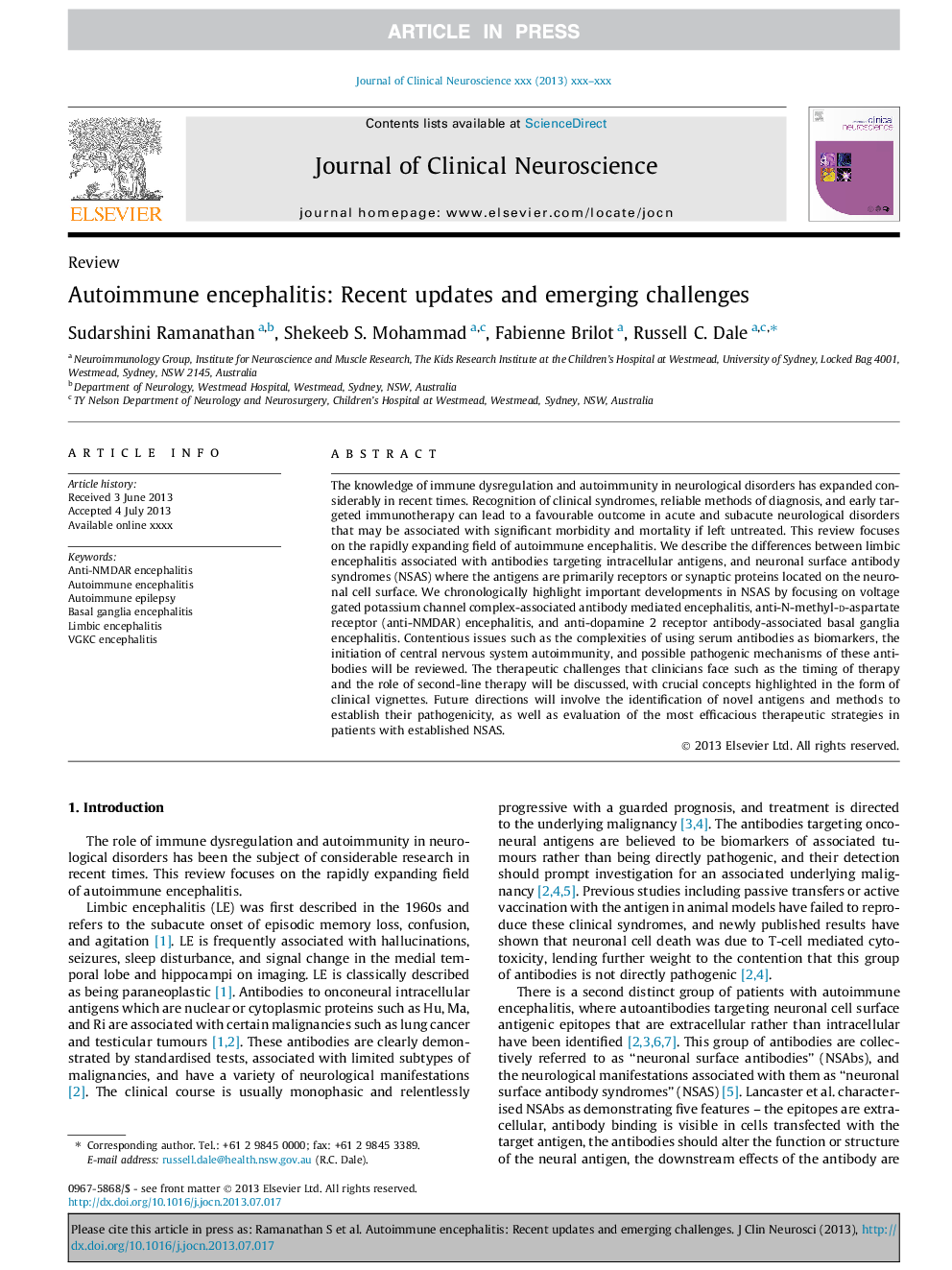| Article ID | Journal | Published Year | Pages | File Type |
|---|---|---|---|---|
| 6019640 | Journal of Clinical Neuroscience | 2014 | 9 Pages |
Abstract
The knowledge of immune dysregulation and autoimmunity in neurological disorders has expanded considerably in recent times. Recognition of clinical syndromes, reliable methods of diagnosis, and early targeted immunotherapy can lead to a favourable outcome in acute and subacute neurological disorders that may be associated with significant morbidity and mortality if left untreated. This review focuses on the rapidly expanding field of autoimmune encephalitis. We describe the differences between limbic encephalitis associated with antibodies targeting intracellular antigens, and neuronal surface antibody syndromes (NSAS) where the antigens are primarily receptors or synaptic proteins located on the neuronal cell surface. We chronologically highlight important developments in NSAS by focusing on voltage gated potassium channel complex-associated antibody mediated encephalitis, anti-N-methyl-d-aspartate receptor (anti-NMDAR) encephalitis, and anti-dopamine 2 receptor antibody-associated basal ganglia encephalitis. Contentious issues such as the complexities of using serum antibodies as biomarkers, the initiation of central nervous system autoimmunity, and possible pathogenic mechanisms of these antibodies will be reviewed. The therapeutic challenges that clinicians face such as the timing of therapy and the role of second-line therapy will be discussed, with crucial concepts highlighted in the form of clinical vignettes. Future directions will involve the identification of novel antigens and methods to establish their pathogenicity, as well as evaluation of the most efficacious therapeutic strategies in patients with established NSAS.
Related Topics
Life Sciences
Neuroscience
Neurology
Authors
Sudarshini Ramanathan, Shekeeb S. Mohammad, Fabienne Brilot, Russell C. Dale,
